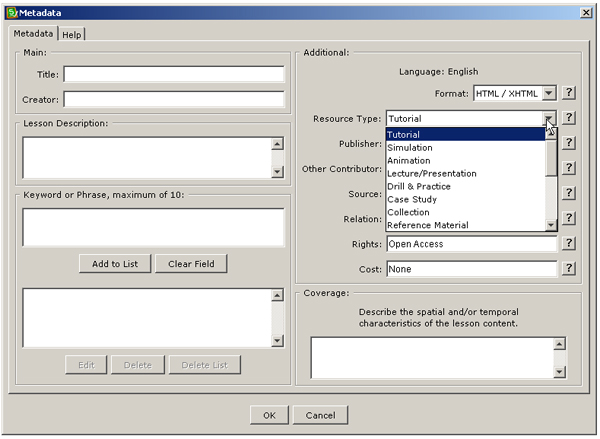“Metadata” refer to “data about data”. These identifiers help potential users more easily see the possible usefulness of a particular digital learning object, module, or learning sequence. Metadata often appear in catalogs of digital collections, for example. They are often used for computers to understand what particular digital objects contain and how these may be used. Some metadata may be captured automatically: Newer-brand digital camcorders and digital still cameras capture GPS and time information of a particular capture and store that as part of the digital output. There are human ways to add value-rich metadata.
Some authoring tools now make it a regular part of the work to add metadata. One example is SoftChalk LessonBuilder 5’s metadata field.
To access this field to label a particular digital learning object, open SoftChalk LessonBuilder. In the menu bar, go to Properties and then Metadata.
 The Metadata table will appear on the screen.
The Metadata table will appear on the screen.

This table will enable a content developer to use a title, include a lesson description, and add in keywords or phrases (for easier searchability) in the left column.
On the right column, there is a drop-down menu to define various types of contents: Tutorial, simulation, animation, lecture/presentation, drill and practice, case study, collection, and reference material.
The publisher, additional contributors, source citations, relation of this course content to other contents, rights release (set to Open Access as a preset), and cost are included.
The Coverage box at the bottom right offers a space to describe the “spatial and/or temporal characteristics of the lesson content.” This latter field may be one way to differentiate an item in a series, such as the applied geographical location of an assignment or a time phase of a particular event.
When the learning object is saved, packaged, and published, the metadata will be a machine-findable aspect of the learning object, which means this information will be helpful for human organization, sorting, finding, selection, and use.